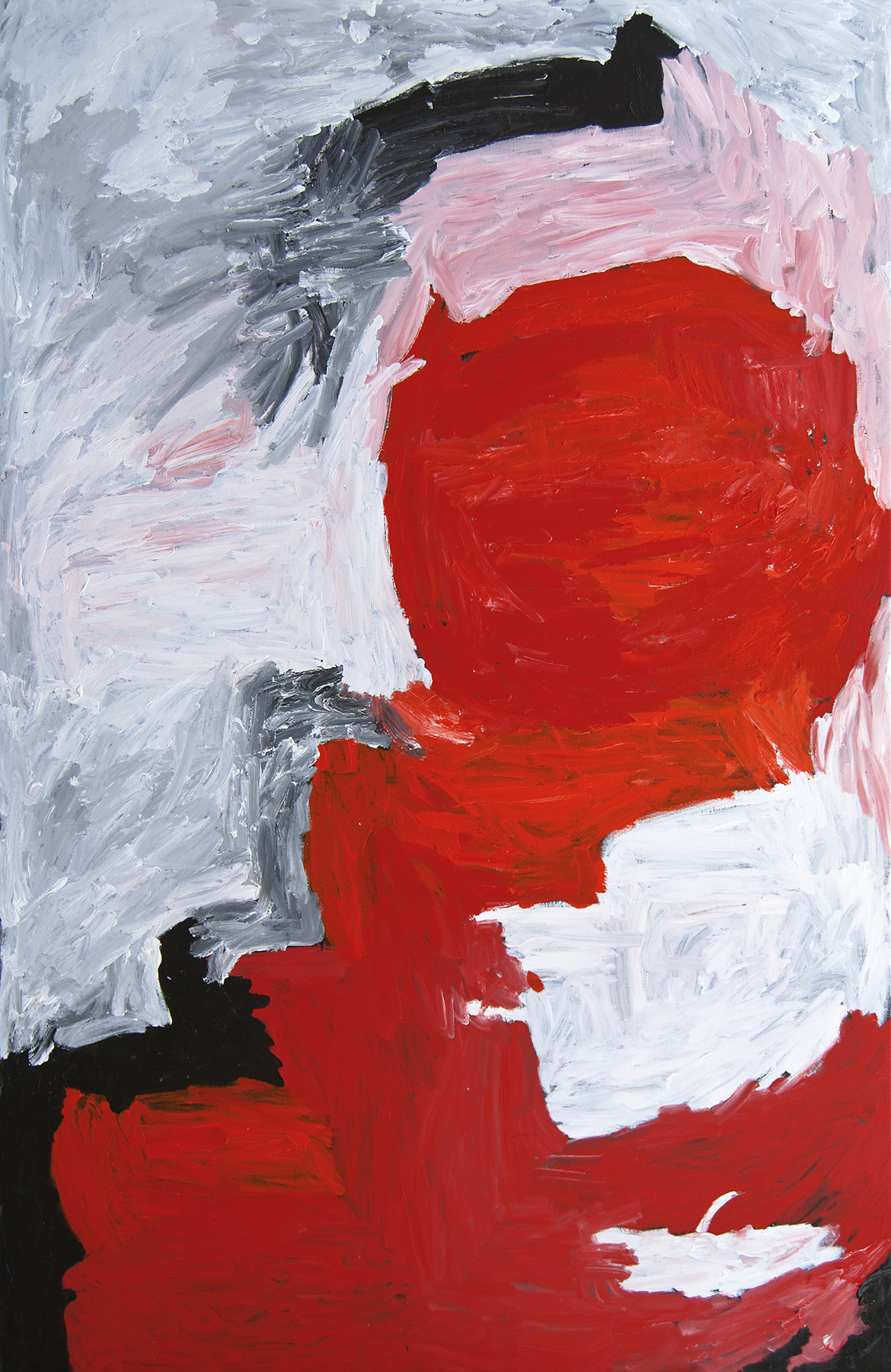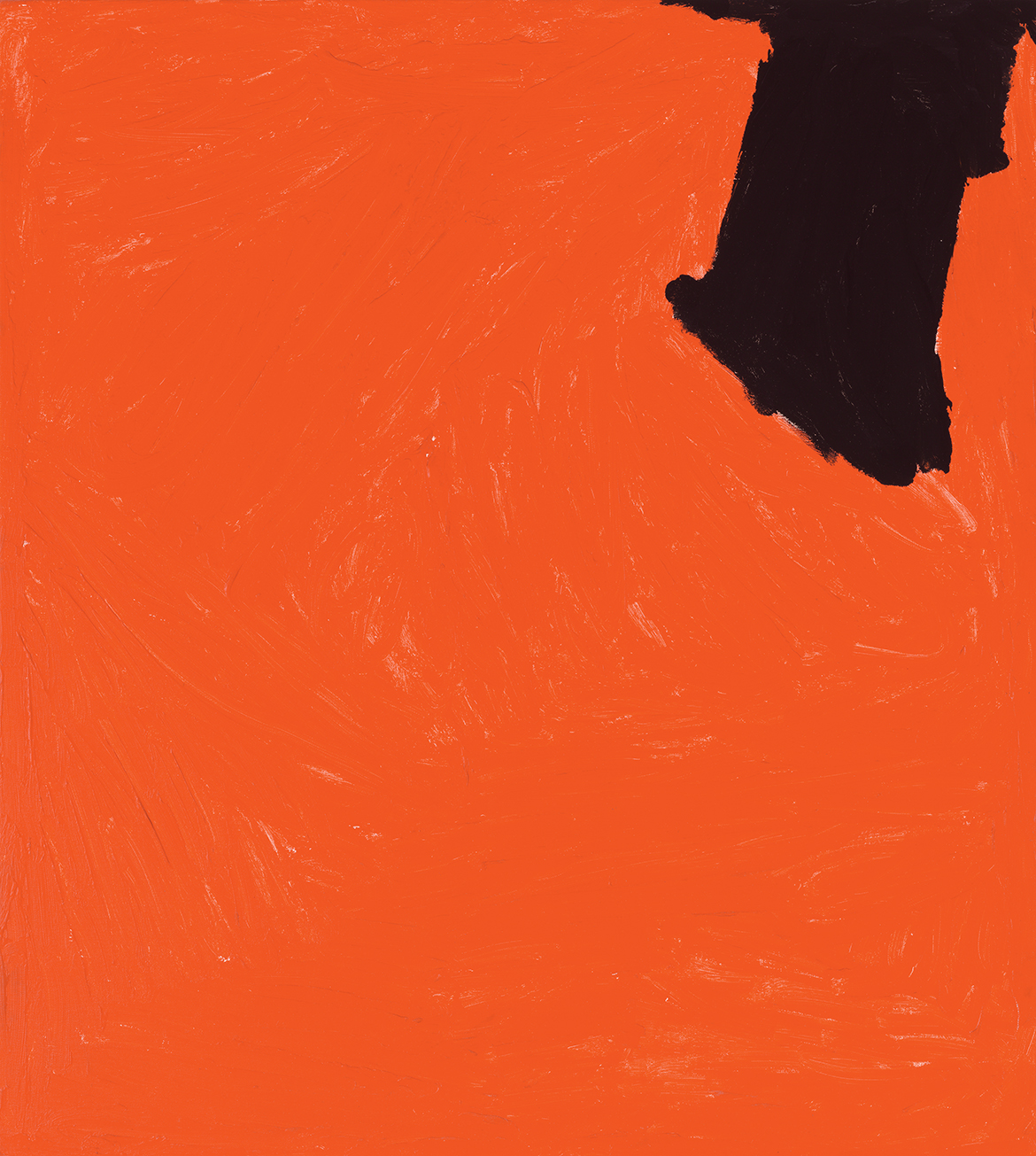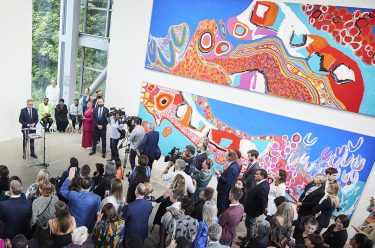Like so many great artists Mirdidingkingathi Juwarnda Sally Gabori — senior Kaiadilt artist from Bentinck Island in Queensland’s Gulf of Carpentaria, Australia — excelled at painting the world she knew, here she introduces you to her grandfather’s country.
‘Dingkari is an outside hunting ground to the south of Bentinck Island. It has a shallow reef but has very deep water right next to it. It is a good place to hunt dugong and turtle.’ Mirdidingkingathi Juwarnda Sally Gabori


Dingkari (Dingkarri) is the Country of Mirdidinkingathi Juwarnda Sally Gabori’s grandfather Dingkarringathi, and brother, Makarrkingathi Dingkarringathi Thuwathu Bijarrb (King Alfred). It is a small islet and important tidal hunting ground to the south of Sweers Island. It is partially connected to Sweers by a long series of shallow rocky reefs called Karandjalt, which extend into the waters of the Gulf like a long hook, connecting the islet to the base of Bardathurr, the highest hill on Kaiadilt Country and the final resting place of Dibirdibi, the Rock Cod Ancestor.
DELVE DEEPER: The life and art of Sally Gabori
Dingkari was revered as a hunting area, as the deep channels that flow at the edge of the reef attract dugong, turtle and large species of fish. Kaiadilt men would travel to Dingkari using walpu, Kaiadilt log rafts. Most of Sally Gabori’s Dingkari paintings feature circular, oval or rectangular shapes, reflecting the islet at different stages of tidal flux. Some show the interconnecting reefs between Sweers Island and Dingkari, while in others the islet is alone and adrift in a sea of paint.
Acknowledgment of Country
The Queensland Art Gallery | Gallery of Modern Art acknowledges the Traditional Owners of the land on which the Gallery stands in Brisbane. We pay respect to Aboriginal and Torres Strait Islander Elders past and present and, in the spirit of reconciliation, acknowledge the immense creative contribution First Australians make to the art and culture of this country.
It is customary in many Indigenous communities not to mention the name or reproduce photographs of the deceased. All such mentions and photographs on the QAGOMA Blog are with permission, however, care and discretion should be exercised.
#QAGOMA

